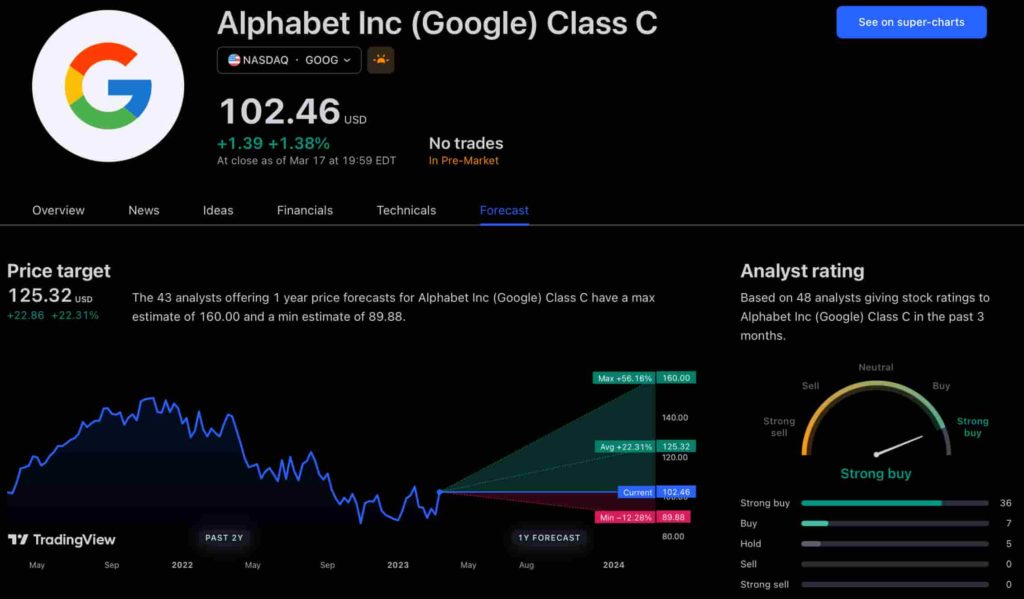The new app is called watchGPT and as I tipped off already, it gives you access to ChatGPT from your Apple Watch. Now the $10,000 question (or more accurately the $3.99 question, as that is the one-time cost of the app) is why having ChatGPT on your wrist is remotely necessary, so let’s dive into what exactly the app can do.
NEWS
WordPress All in One SEO Auto Updates Cause Backlash

According to user reports, All in One SEO plugin for WordPress unilaterally turned on automatic updates. The auto updates coincided with a major upgrade which in turn caused multiple sites to suffer outages and other unintended behavior.
Automatic Updates Without Consent
Automatic update is a feature that allows plugins to update automatically without any action from the publisher. The common expectation is that this is something that a publisher opts into it.
Some publishers backup their WordPress installations before updating. That way if something goes wrong they can easily roll it back to the previous state.
With automatic updates it’s no longer possible to save a backup before the update happens. A bad update can be a major problem that becomes harder without a proper backup.
That’s why it was surprising when a member of the Advanced WordPress Facebook group started a discussion about how All in One SEO turned on automatic updates without (according to the user) notification beyond what was in the changelog.
A changelog is a notation of what the changes in an update are.
The original post on the private Facebook group framed the situation as an ethical issue as to whether a plugin publisher has a responsibility to make it expressly known that a change in the automatic update feature is happening.
Many people felt that automatic updates should always be a user’s choice.
Response on Twitter
There was some discussion about All in One SEO automatic updates as well. Several publishers tweeted that the automatic update option should not be turned on as a default.
A publisher expressed their negative feedback on twitter:
“I do not like to automatically update WordPress plugins, and I especially don’t like plugin software authors to try to force automatic updates on the marketplace. So much so, I will look to replace such software if I can. Please stop.”
He followed up with this tweet:
Although this message was prompted by the recent All In One SEO default setting of automatic update in the plugin, that is far from the only plugin software doing this. Offer the option, don’t set it as default, and make it plain as day as an option.
— Wayne Kessler (@KFIweb) December 27, 2020
All in One SEO Publisher Feedback
There were several negative reports about the automatic update feedback over on the WordPress plugin repository support page.
One plugin user called All in One SEO a disaster, writing:
“After nearly 10 years, I have to say goodbye.
This recent series of almost daily updates since version 4 was released really shows that the new owners of AIOSEO have no clue at all about SEO…
…I don’t have the time to invest in being a beta tester for a plugin that has 2 million users but now doesn’t work… because it is so full of bugs.”
There is an entire support thread full of angry publishers who complained that All in One SEO auto-updated despite having set the plugin to not automatically update.
Another irate publisher wrote:
“Multiple sites have updated to 4.0.11 without my permission and while all auto updates are disabled.
Your once reliable plugin has destroyed hundreds of pages of social meta data on multiple sites, broken layout (and this after I fixed the problems and told you last week, I will be disabling all updates).
How dare you update my websites without my permission
For everyone reading this, this plugin has come to the end of its life as we know/knew it.
Migrate everything you have now, while you still can.”
Multiple All in One SEO 4.X Updates
All in One SEO updated from 3.7 to a new 4.X version on November 14, 2020. This was a rocky start because a second update to 4.01 followed on the same day to fix a database issue.
From November 14th through December 2020, All in One SEO plugin published a total of twelve updates to fix a large amount of issues, seemingly dozens of bugs.
To put that into perspective, according to the Yoast SEO plugin changelog, Yoast SEO published only three updates within that same one month time period.
These are bug fixes from just one update:
- Fixed: Bug that prevented editors and authors from editing SEO titles and descriptions
- Fixed: TruSEO support in the classic editor URL not fully working on extra long URLs
- Fixed: Issue where the closing head tag did not always display
- Fixed: Issue on a few remaining sites where the title tag would strip out a $ and any numbers after it\
- Fixed: PHP error related to missing array during the migration
- Fixed: Issue where AIOSEO would not remove the trailing /amp from canonical URLs
- Fixed: Issue where notices would appear in the log when trying to access our log file
- Fixed: Conflict with WP Shop plugin
But it’s the update from December 21 that seems to have introduced the unilateral automatic update. That’s the only update listed in the changelog that mentions auto update but it’s somewhat vague.
This is what the changelog says:
“Updated: Default options for auto updates”
Screenshot of All in One SEO Changelog

Should WordPress Plugins Auto Update Without Permission?
Automatic updates can make sense for publishers with sites that aren’t particularly complex. That said, backing up a site is a prudent step to take before updating.
Many people believe that publishers should have the choice to opt-in to auto updates.
The publishers of All in One SEO have apologized and stated that they are removing the automatic updates. Should auto updates have been turned on by them to begin with?
Facebook Faces Yet Another Outage: Platform Encounters Technical Issues Again

Uppdated: It seems that today’s issues with Facebook haven’t affected as many users as the last time. A smaller group of people appears to be impacted this time around, which is a relief compared to the larger incident before. Nevertheless, it’s still frustrating for those affected, and hopefully, the issues will be resolved soon by the Facebook team.
Facebook had another problem today (March 20, 2024). According to Downdetector, a website that shows when other websites are not working, many people had trouble using Facebook.
This isn’t the first time Facebook has had issues. Just a little while ago, there was another problem that stopped people from using the site. Today, when people tried to use Facebook, it didn’t work like it should. People couldn’t see their friends’ posts, and sometimes the website wouldn’t even load.
Downdetector, which watches out for problems on websites, showed that lots of people were having trouble with Facebook. People from all over the world said they couldn’t use the site, and they were not happy about it.
When websites like Facebook have problems, it affects a lot of people. It’s not just about not being able to see posts or chat with friends. It can also impact businesses that use Facebook to reach customers.
Since Facebook owns Messenger and Instagram, the problems with Facebook also meant that people had trouble using these apps. It made the situation even more frustrating for many users, who rely on these apps to stay connected with others.
During this recent problem, one thing is obvious: the internet is always changing, and even big websites like Facebook can have problems. While people wait for Facebook to fix the issue, it shows us how easily things online can go wrong. It’s a good reminder that we should have backup plans for staying connected online, just in case something like this happens again.
NEWS
We asked ChatGPT what will be Google (GOOG) stock price for 2030

Investors who have invested in Alphabet Inc. (NASDAQ: GOOG) stock have reaped significant benefits from the company’s robust financial performance over the last five years. Google’s dominance in the online advertising market has been a key driver of the company’s consistent revenue growth and impressive profit margins.
In addition, Google has expanded its operations into related fields such as cloud computing and artificial intelligence. These areas show great promise as future growth drivers, making them increasingly attractive to investors. Notably, Alphabet’s stock price has been rising due to investor interest in the company’s recent initiatives in the fast-developing field of artificial intelligence (AI), adding generative AI features to Gmail and Google Docs.
However, when it comes to predicting the future pricing of a corporation like Google, there are many factors to consider. With this in mind, Finbold turned to the artificial intelligence tool ChatGPT to suggest a likely pricing range for GOOG stock by 2030. Although the tool was unable to give a definitive price range, it did note the following:
“Over the long term, Google has a track record of strong financial performance and has shown an ability to adapt to changing market conditions. As such, it’s reasonable to expect that Google’s stock price may continue to appreciate over time.”
GOOG stock price prediction
While attempting to estimate the price range of future transactions, it is essential to consider a variety of measures in addition to the AI chat tool, which includes deep learning algorithms and stock market experts.
Finbold collected forecasts provided by CoinPriceForecast, a finance prediction tool that utilizes machine self-learning technology, to anticipate Google stock price by the end of 2030 to compare with ChatGPT’s projection.
According to the most recent long-term estimate, which Finbold obtained on March 20, the price of Google will rise beyond $200 in 2030 and touch $247 by the end of the year, which would indicate a 141% gain from today to the end of the year.
Google has been assigned a recommendation of ‘strong buy’ by the majority of analysts working on Wall Street for a more near-term time frame. Significantly, 36 analysts of the 48 have recommended a “strong buy,” while seven people have advocated a “buy.” The remaining five analysts had given a ‘hold’ rating.

The average price projection for Alphabet stock over the last three months has been $125.32; this objective represents a 22.31% upside from its current price. It’s interesting to note that the maximum price forecast for the next year is $160, representing a gain of 56.16% from the stock’s current price of $102.46.
While the outlook for Google stock may be positive, it’s important to keep in mind that some potential challenges and risks could impact its performance, including competition from ChatGPT itself, which could affect Google’s price.
Disclaimer: The content on this site should not be considered investment advice. Investing is speculative. When investing, your capital is at risk.
NEWS
This Apple Watch app brings ChatGPT to your wrist — here’s why you want it

ChatGPT feels like it is everywhere at the moment; the AI-powered tool is rapidly starting to feel like internet connected home devices where you are left wondering if your flower pot really needed Bluetooth. However, after hearing about a new Apple Watch app that brings ChatGPT to your favorite wrist computer, I’m actually convinced this one is worth checking out.
-

 PPC4 days ago
PPC4 days ago19 Best SEO Tools in 2024 (For Every Use Case)
-

 SEO7 days ago
SEO7 days agoGoogle Clarifies Vacation Rental Structured Data
-
SEARCHENGINES7 days ago
Daily Search Forum Recap: April 16, 2024
-

 MARKETING6 days ago
MARKETING6 days agoStreamlining Processes for Increased Efficiency and Results
-
SEARCHENGINES6 days ago
Daily Search Forum Recap: April 17, 2024
-

 SEO6 days ago
SEO6 days agoAn In-Depth Guide And Best Practices For Mobile SEO
-

 PPC6 days ago
PPC6 days ago97 Marvelous May Content Ideas for Blog Posts, Videos, & More
-
SEARCHENGINES5 days ago
Daily Search Forum Recap: April 18, 2024




![Astra Theme Coupon 2024 (Apr) [40% Discount, Save $400] Astra Pricing Plans on discounts](https://articles.entireweb.com/wp-content/uploads/2024/04/1713797772_611_Astra-Theme-Coupon-2024-Apr-40-Discount-Save-400-400x240.png)
![Astra Theme Coupon 2024 (Apr) [40% Discount, Save $400] Astra Pricing Plans on discounts](https://articles.entireweb.com/wp-content/uploads/2024/04/1713797772_611_Astra-Theme-Coupon-2024-Apr-40-Discount-Save-400-80x80.png)
![Elementor Pro Discount (Apr 2024) [70% OFF, Save $150] Elementor Coupon](https://articles.entireweb.com/wp-content/uploads/2024/04/1713729377_Elementor-Pro-Discount-Apr-2024-70-OFF-Save-150-400x240.png)
![Elementor Pro Discount (Apr 2024) [70% OFF, Save $150] Elementor Coupon](https://articles.entireweb.com/wp-content/uploads/2024/04/1713729377_Elementor-Pro-Discount-Apr-2024-70-OFF-Save-150-80x80.png)






